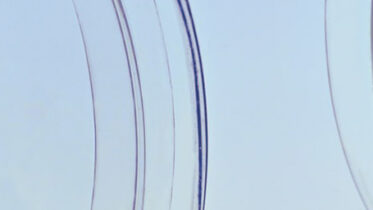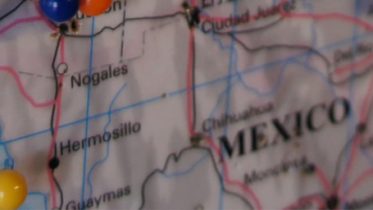The Mexican patent linkage system: present and future
- 19 August 2021
- Articles
To pharmaceutical patent owners, the patent linkage system represents an additional means of protection in Mexico when it comes to keeping generics off the market. As is usual with TRIPS-plus provisions related to pharmaceuticals, the linkage system has been the subject of fierce debate since its creation in 2003. Yet, Mexico is on the verge of strengthening the current framework, offering additional benefits to patent owners. What is the linkage system, how is it applied in Mexico, and how is it expected to change now that a new law and new international obligations are in force?
Linkage system
The patent linkage system, often referred simply as “patent linkage” or “linkage system”, is a set of rules, authorities, and instruments that link patent rights over a pharmaceutical product to the Sanitary Registration[1] (SR) that is required to market said product. The system is of preventive nature: it was conceived to avoid the grant or approval of SRs of pharmaceutical products that, when commercialized, would infringe patent rights. The underlying rationale is that, by forestalling the grant of SRs, patent rights are respected and long and costly litigation is spared. The system applies to both innovator and generic registrations, but, naturally, generic products are the main target.
Two independent authorities and their respective laws and regulations support the linkage system. On the one hand, the Federal Commission for the Protection Against Sanitary Risks (FCPASR) is in charge of the regulatory process for pharmaceutical products and is responsible of granting or rejecting SRs, as provided is the General Law on Health (GLH) and the Health Supplies Regulation (HSR). On the other hand, the Mexican Institute of Industrial Property (MIIP) is responsible of granting and publishing patents, under the Federal Law for Industrial Property Protection (FLIPP) and the Industrial Property Law (IPL) Regulations. It should be noted that the IPL was superseded by the FLIPP on November 5, 2021, but the IPL Regulations continue to apply until the enactment of proper FLIPP Regulations.
Likewise, two official tools of communication are instrumental to the operation of the system. The Gazette of Patents of Medicaments, known as “the Linkage Gazette”, is published by the MIIP twice-a-year (February and August) and contains a list of patents related to pharmaceutical products; whereas a FCPASR-MIIP Communication Form contains information on the SR application used to assess whether the pharmaceutical product would infringe patent rights.
As to the rules, the applicable legal provisions are article 162 FLPIP, article 47-bis IPL Regulations, and article 167-bis HSR. Article 162 FLPIP is the cornerstone of the Linkage System[2]: it establishes the publication and scope of the Linkage Gazette, and mandates coordination between FCPASR and MIIP. The IPL Regulations further define in article 47-bis the scope and contents of the Linkage Gazette. Article 167-bis HSR establishes the linkage mechanism, which includes the obligation of SR applicants to demonstrate ownership or licensee status of the relevant patents, or to submit an under oath non-infringement declaration.
SR applicants and patent holders interact in the system as described below.
Procedure
One of the regulatory requirements for the approval of a pharmaceutical product is that the SR applicant shows either i) that it is the patentee or licensee of the active pharmaceutical ingredient (API) of the pharmaceutical product or ii) that it does not invade[3] patents related to the API.
Filing evidence of the patent or license registered before the MIIP suffices to establish the patentee or licensee status. If the applicant and patent holder are the same entity, the regulatory process follows its regular course.
Showing that patent rights are not invaded requires a sworn statement that the pharmaceutical product is not covered by a patent listed in the Linkage Gazette. This triggers communication between authorities. The FCPASR fills in the Communication Form using information in the SR application and sends it to the MIIP, which analyzes whether patent rights would be infringed. If positive, the FCPASR requests the SR applicant to demonstrate that it is the patentee or licensee; else the SR application is rejected.
It can be noted that the burden of observing patent rights is shifted to the government, through the regulatory and patent authorities. SR applicants bear the burden of demonstrating non-infringement. Patent holders are not afforded active participation in the process or even notification of the SR application filing; under the existing rules, their role is limited to listing patents in the Linkage Gazette.
Linkage Gazette
The Linkage Gazette lists patents according to the API they relate to. This does not mean that only API patents can be listed. Combination and formulation patents, and all product patents covering a substance or mixture of substances with a therapeutic effect, are eligible for listing. Under the MIIP’s interpretation, patents covering products that do not exert per se a therapeutic effect, such as those covering excipients, pharmaceutical coatings, and nutritional supplements, cannot be listed.
Originally, the MIIP interpreted that formulation patents were excluded from listing. It was only after repeated litigation that contradictory criteria from Collegiate Courts were resolved by the Supreme Court of Justice, which established that formulations are eligible[4].
As to medical use inventions, the MIIP’s position is that rights over a medical use do not confer protection to the therapeutic substance(s) per se, so they do not cover a pharmaceutical product. Such interpretation, however, ignores that the object of SRs are pharmaceutical products with defined therapeutic indications. Indeed, there are numerous court precedents ordering the MIIP to list use patents when applicants appeal, and, therefore, the Linkage Gazette does contain many use patents. Until now, no binding case law has been established for medical use claims, so litigation is still required to list use patents in the Linkage Gazette.
Process patents are expressly excluded per the IPL Regulations.
The information published in the Linkage Gazette is the following:
- Generic name. This corresponds to the International Non-proprietary Name (INN) of the API of the pharmaceutical product.
- Specific description and chemical name. This is a brief description of the molecular or chemical nature of the API.
- Patent number, patent term, and annuities paid.
- Patent holder
- The claims covering the pharmaceutical product are reproduced or referred to here.
- This section comprises miscellaneous information, including the type of patent (e.g., API, formulation, use), registered licensees, and whether the listing was made in compliance of a court order.
The listing procedure involves filing a request before the MIIP, which is usually done by the patentee, and, in exceptional cases, through the National Chamber of the Pharmaceutical Industry. There is no time limit for filing the request.
Sworn statement
According to article 167 bis HSR, the sworn statement of non-infringement shall be made “according to the product listing set forth by article 47 bis of the Industrial Property Law Regulations”, seemingly binding SR applicants to observe patents listed in the Linkage Gazette only. However, this same legal provision also requires MIIP to determine “whether in-force patents are invaded” and to inform the FCPASR in case there are “in force patents on the active ingredient or substance”, without establishing a restriction to MIIP’s search and analysis to the patents listed in the Linkage Gazette.
In practice, the MIIP may identify patents that are not listed in the Linkage Gazette, which in turn may be used by the FCPASR to reject the SR application.
Therefore, the sworn statement should focus not only on the Linkage Gazette, but on all relevant product and use patents related to the pharmaceutical product.
Communication Form and MIIP’s assessment
MIIP’s assessment on the potential infringement of patent rights is based on the sworn statement by the SR applicant and the Communication Form provided by the FCPASR.
The Communication Form contains predefined fields to be completed by FCPASR based on technical information in the sanitary registration application. Specifically, the fields are: 1) SR applicant, 2) generic name (INN)or salts of the API, 3) IUPAC chemical name, 4) chemical formula, 5) API and additives formulation, 6) pharmaceutical form, 7) therapeutic indication, 8) dosage per the prescribing information, 9) presentation form, 10) administration route, 11) instructions/considerations for use, 12) diluent, 13) drug physicochemical properties, 14) whether it is a biotechnology product.
The MIIP has ten working days to analyze the information and convey its opinion to FCPASR. With MIIP’s conclusion, the FCPASR decides whether to request the SR applicant to submit evidence of patentee or licensee status. For a long time, MIIP’s full assessments remained hidden to SR applicants, but, since 2020, they are publicly available online.
Regardless of the patents identified in the sworn statement (if any) or those listed in the Linkage Gazette, the MIIP carries out a search and analysis of relevant patent rights. Thus, one may question if the Linkage Gazette serves a real purpose. It can be said that the Linkage Gazette is not redundant for the following reasons.
First, the Linkage Gazette is an official source of information. As such, SR applicants that are not patent holders/licensees, as well as the intervening authorities, should at least regard patents listed in this official publication. Second, even if article 167 bis HSR provided sufficient legal basis for MIIP to analyze non-listed patents, there is no guarantee that a non-listed patent will be found by MIIP. The MIIP’s limited resources, along with the short time for responding to FCPASR’ requests (i.e. 10 working days) may compromise the quality of MIIP’s patent searches.
Hence, for patent holders, listing a patent provides greater certainty that the patent will be an obstacle for unauthorized SR applicants, as opposed to not listing. Further, SR applicants can be certain that listed patents can be cited against their SR applications; however, it cannot be assured that a non-listed patent will not be cited against an SR application, so SR applicants should prepare accordingly.
Challenges
The Linkage System has proven effective: it has served as a filter for many generic products that did not observe patent rights. Nevertheless, there is big room for improvement.
Despite the numerous fields in the Communication Form, the information may be insufficient to render a conclusion, which, together with the very limited time MIIP has to perform a thorough search and analysis, has raised concerns in both generic and innovator companies regarding the accuracy of the assessment.
How the Linkage Gazette is put together has also been criticized. The Linkage Gazette lists patents that may or may not be associated to a registered product; existence of a SR for a product covered by the patent is not required. Thus, despite the name, the Linkage System does not actually associate SRs with patents and does not provide unambiguous information on which SRs (and the associated pharmaceutical product and therapeutic indications) are covered by which patents. Generics have also frequently voiced in favor of limiting the linkage system to patents which were listed by patent holders, in an attempt to reduce uncertainty.
Further concerns relate to the procedural rights of both parties.
SR applicants must foresee what patents might be relevant instead of focusing only on those published in the Linkage Gazette; in case of an unforeseen patent is detected by the MIIP, they have a single opportunity to submit arguments.
Further, SR applicants’ alternatives in case of an unfavorable opinion from the MIIP are very limited. The HSR requires them to present evidence of patentee or licensee status, which is generally non-viable. Instead, applicants submit arguments against MIIP’s conclusions with no guarantee that their response will be duly considered.
In turn, patent holders are not given notice of the filing of SR applications. Although there are means to find out whether generic applications have been filed, the process is slow and undermines innovators’ opportunities to initiate legal actions.
Another issue is the lack of opportunity for the patent holder to participate in the procedure, or, at least, to provide information to assist MIIP’s assessment. This has resulted in legal actions seeking participation in the generic regulatory process based on existing patent rights, with limited success so far. In any case, targeting generic applications to prevent approval may still be an option for many innovators having aggressive enforcement strategies.
Future
Throughout the years, there have been multiple legislative attempts to modify the Linkage System at the Congress. Most of them have sought to limit its scope in favor of generics. None has prevailed so far.
The outlook is promising for innovators.
The United States-Mexico-Canada Agreement (USMCA), a trilateral trade agreement that entered into force on July 1, 2020, requires the parties to have a linkage system in which the patent holder is given notice of a generic application and is provided adequate time and sufficient opportunity to seek procedures and expeditious remedies for the timely resolution of any infringement or validity disputes[5]. In the alternative, Mexico can maintain its current system provided that the patent holder is given reasonable notice of the filing of the generic application, as well as opportunity to present facts and arguments supporting its position prior to the conclusion of the regulatory process[6]. That is, Mexico has the option of setting a system that more closely resembles those of Canada and the United States or maintaining the current system while providing notice and allowing some participation to patent holders.
Another expected change refers to the scope of patents subject to the linkage system. The FLPIP provides that the Linkage Gazette shall list patents that are “susceptible of being used in” pharmaceutical products. The language used to define the type of patents that may be listed is broader than that used in the currently applying IPL Regulations and may be interpreted as covering medical uses patents and other type of patents not currently deemed eligible.
As noted above, the IPL Regulations apply only in absence of FLPIP Regulations. FLPIP Regulations should be issued in the near future and should contain rules on the contents of the Linkage Gazette that are not only clearer but also compliant with the FLPIP and the USMCA. Even if the FLPIP Regulations exclude certain patents from publication in the Linkage Gazette, because the broader statutory provisions trump any contravening provisions in the Regulations, court resolutions ordering the listing of such patents are likely to continue.
Furthermore, the FLPIP requires establishment of a FCPASR-MIIP collaboration mechanism for patents covering pharmaceutical products[7] within a defined period that has already lapsed. Undoubtedly, such mechanism should be in line with the obligations of the USMCA.
The above means that the current system requires urgent revision. Even if there is no relevant Regulation proposals for the time being, it is clear that the new Linkage System rules will provide an enhanced protection to patent holders.
_______________________________________________________________________
[1] Sanitary Registrations are equivalent to Marketing Authorizations. It should be noted, however, that the courts have resisted to regard Sanitary Registrations as a “license to sell” a pharmaceutical product. Rather, Sanitary Registrations are viewed as a sort of “certificate” of safety and efficacy. The author notes that, regardless of any conceptual difference, the “certificate” of safety and efficacy is required to sell a pharmaceutical product in Mexico.
[2] This is true since November 5, 2020, with the entry into force of the FLPIP. Previously, the Linkage System lacked basis on Laws since it was provided in administrative regulations only. Regulations are hierarchically inferior to Laws, stem from the Executive branch (rather than legislature) and can be enacted/amended through a much simpler process, so their provisions can be seen as more susceptible to change due to varying political priorities.
[3] It should be noted that the regulatory requirement is not to invade instead of not to infringe. A product is deemed to invade a patent if it is within the scope of the claims. In contrast, to infringe refers to the act of producing, using, selling, offering for sell or importing a patented product. The difference is key because the filing of a sanitary registration application is not an act of infringement under the FLPIP and, until now, has not been deemed to represent an imminent threat of infringement by the courts. Similarly, obtaining a sanitary registration is not an act of infringement according to the FLPIP; however, this has not dissuaded patentees’ efforts to target the sanitary registration based on their patent rights in certain circumstances.
[4] Said criterion was established in case 386/2009.
[5] See article 20.50 USMCA.
[6] See Annex 20-A, Annex to article 20.50.
[7] See the fifth transitory provision of the LFPPI.









